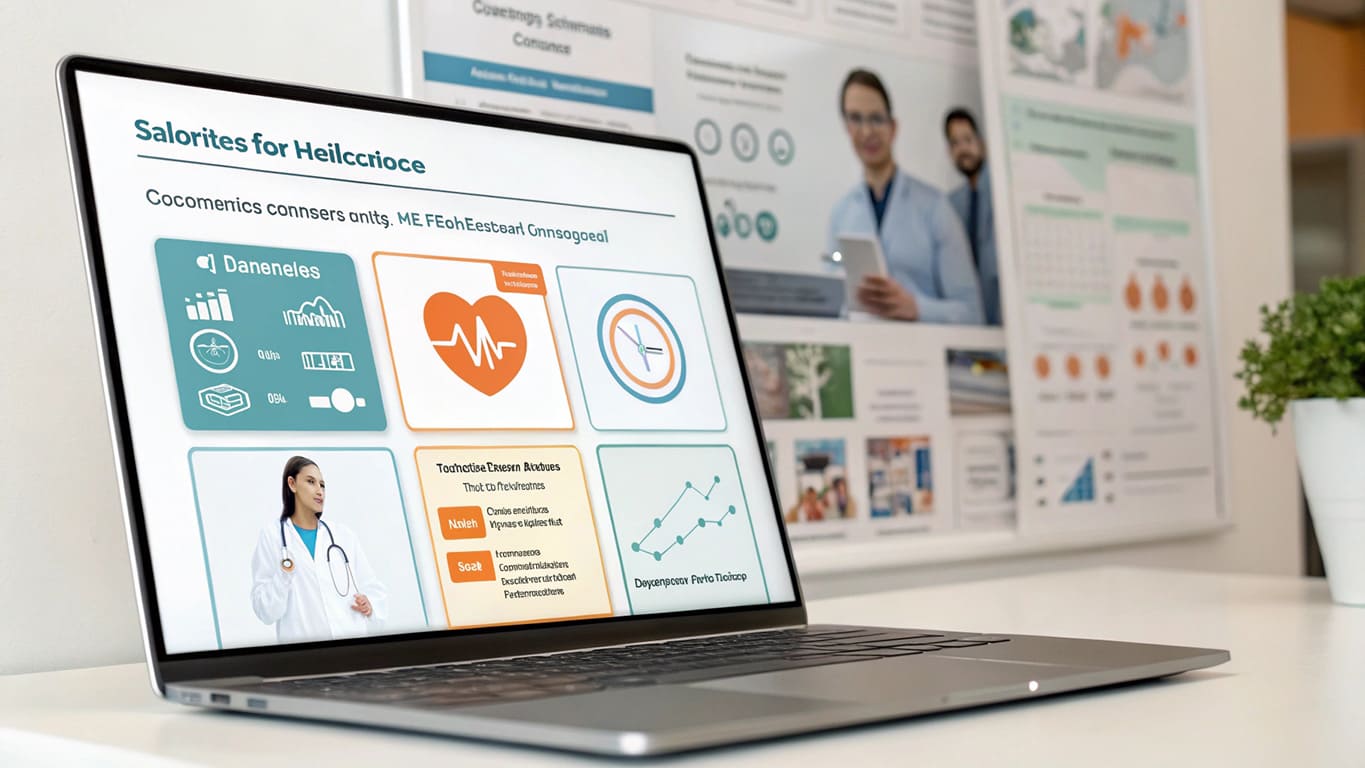Struggling to get your team fully on board with your CRM? You’re not alone. Many organizations invest heavily in Salesforce but see lukewarm user adoption because the platform feels generic or complicated. The secret sauce? Salesforce customization. When you tailor Salesforce to fit your team’s unique workflows—especially through intuitive custom dashboards—you transform a clunky tool into a productivity powerhouse. Let’s dive into how Salesforce customization drives CRM adoption for real business results.
Understanding CRM User Adoption Challenges
Driving strong CRM user adoption remains one of the biggest hurdles for organizations implementing Salesforce. Despite Salesforce’s market leadership and robust capabilities, many users find the out-of-the-box experience underwhelming or frustrating. This gap often stems from Salesforce’s “”one-size-fits-all”” approach which may not align with how teams actually work on the ground.
Common user frustrations include:
- Complex navigation and cluttered interfaces that slow user workflows.
- Irrelevant fields and processes that add noise rather than value.
- Difficulty accessing meaningful insights due to generic reporting.
- Lack of personalization to user roles or teams, forcing users to sift through unrelated data.
These barriers lead to low engagement rates, inconsistent data entry, and eventually, degraded data quality. The impact on business KPIs can be severe. Without widespread adoption, anticipated ROI from CRM investments—such as improved sales pipeline visibility, enhanced customer service, or streamlined marketing campaigns—remains unattainable. According to recent studies, poor CRM uptake can reduce expected returns by over 40%, underscoring the critical importance of addressing adoption challenges.
Salesforce customization becomes essential because it offers a tailored experience that removes these friction points. Rather than forcing users to adapt to Salesforce’s default design, customization molds the platform around real user needs and preferences. This alignment builds familiarity, reduces training time, and ultimately encourages users to embrace the CRM as a natural extension of their daily work.
Leveraging Salesforce Customization to Enhance CRM User Adoption
Customization is the key to unlocking Salesforce’s full potential for your organization. But it’s important to clarify a common misconception here:
- Configuration refers to setting up Salesforce using built-in tools like point-and-click settings and basic workflow rules—essentially adjusting existing options.
- Customization involves deeper, tailored development such as custom objects, tailored page layouts, Apex code, Lightning Components, and integrations that reshape user experience.
Successful customization targets user pain points directly. Here’s where you can make the biggest impact:
- Custom fields and objects: Capture data unique to your business that standard Salesforce structures don’t accommodate.
- Personalized page layouts: Hide irrelevant information and surface the key elements sales reps, service agents, or marketers need.
- Role-based customization: Tailor the interface, fields, and access permissions based on job functions. For example, a sales rep might see pipeline stages, while support agents view case histories and SLAs.
- Automated workflows: Streamline repetitive tasks like opportunity approvals, notifications, or follow-up reminders to save time and reduce errors.
- Custom Actions and Quick Links: Enable users to perform frequent tasks with fewer clicks.
By implementing such changes, Salesforce becomes intuitive and relevant, which reduces resistance and accelerates adoption. Users feel empowered rather than burdened, shifting CRM from a compliance chore to a productivity tool.
The Power of Custom Dashboards in Salesforce
Among all customization options, custom dashboards stand out as a critical lever to boost user engagement. Dashboards translate raw CRM data into easily digestible insights that guide daily decision-making.
Here’s why custom dashboards are so powerful:
- Simplify complex data: Dashboards visualize KPIs, sales trends, service metrics, and marketing ROI in real-time, eliminating guesswork.
- Increase transparency: Teams instantly understand progress, bottlenecks, and goals—no need to drill through many reports.
- Motivate users: Visual tracking of individual and team performance inspires productivity and healthy competition.
- Enhance collaboration: Shared dashboards align everyone with consistent, up-to-date information.
Best practices for designing dashboards that maximize CRM user adoption include:
- Keep it focused: Display only key metrics relevant to the specific user’s role and objectives.
- Use clear visualizations: Charts, graphs, and gauges enable quick comprehension. Avoid cluttered or overly complex layouts.
- Make it actionable: Include drill-down capability so users can investigate anomalies or opportunities.
- Responsive design: Ensure dashboards perform well on desktop and mobile devices.
- Regularly update: Refresh data feeds and customize periodically based on user feedback and shifting business priorities.
For example, a sales manager’s dashboard may feature pipeline stages, close rates, and top-performing reps, while a customer support lead sees open cases, resolution times, and customer satisfaction scores.
Implementations like these help users quickly grasp insights and rely on Salesforce as their single source of truth. As a result, the CRM becomes an indispensable element of daily workflows rather than an afterthought.
Advanced Salesforce Customization Tactics and Trends
Looking ahead to 2025 and beyond, Salesforce customization is evolving rapidly, incorporating cutting-edge tools and trends:
- Lightning App Builder and Flow: These no-code tools enable admins to create fully personalized pages and automate complex business processes without developer overhead. Lightning Experience lets you design interfaces relevant to each team’s unique jobs-to-be-done, simplifying adoption.
- AI and predictive analytics: Salesforce Einstein and similar AI modules are increasingly integrated within custom dashboards to deliver predictive insights—like forecast accuracy, churn risk alerts, or suggested next best actions—empowering users to work smarter.
- Mobile-first customization: With distributed, frontline workforces becoming the norm, tailoring Salesforce mobile apps is critical. Custom compact layouts, quick actions, and voice-driven features improve usability for on-the-go employees, supporting continuous CRM engagement.
- Continuous feedback loops: Leading organizations deploy regular surveys, in-app prompts, and usage analytics to gather user feedback on customizations. This iterative approach allows you to constantly refine and enhance the Salesforce experience, preventing stagnation and boosting sustained adoption.
By embracing these advanced tactics, businesses ensure their Salesforce investment remains aligned with evolving user needs, maximizing value delivery.
Conclusion
Salesforce customization is not just a nice-to-have but a critical factor in driving CRM user adoption and maximizing your investment. By tailoring the platform—with a special focus on custom dashboards—you create an intuitive, efficient environment that users actually want to engage with. The ability to mold Salesforce around specific workflows and data needs reduces friction, inspires confidence, and improves productivity across teams.
Partnering with experts like WildnetEdge ensures your Salesforce customizations hit the mark, enabling seamless adoption and measurable performance improvements. Their proven strategies and hands-on experience help align technology with your business realities, accelerating user buy-in and unlocking the full potential of your CRM.
Ready to transform your Salesforce experience and empower your teams? Connect with WildnetEdge today and start your journey toward optimized CRM user adoption.
FAQs
Q1: How does Salesforce customization improve CRM user adoption?
Customization adapts Salesforce to fit specific workflows and user needs, making the CRM more intuitive and relevant, which encourages consistent use and adoption.
Q2: What role do custom dashboards play in Salesforce customization?
Custom dashboards provide users with tailored, real-time data visualizations that simplify decision-making and improve engagement with the CRM system.
Q3: What are best practices for designing custom dashboards to boost user adoption?
Focus on clarity, relevance, and simplicity—display only critical KPIs, use visual elements like charts, and ensure dashboards align with individual user roles.
Q4: Can Salesforce customization help remote or mobile users?
Yes, mobile-first customization ensures that Salesforce interfaces are optimized for remote access, improving usability and adoption among on-the-go employees.
Q5: Why should businesses work with a partner like WildnetEdge for Salesforce customization?
WildnetEdge brings expert insight and proven strategies to customize Salesforce effectively, ensuring solutions fit your unique business needs and drive maximum CRM adoption.

Nitin Agarwal is a veteran in custom software development. He is fascinated by how software can turn ideas into real-world solutions. With extensive experience designing scalable and efficient systems, he focuses on creating software that delivers tangible results. Nitin enjoys exploring emerging technologies, taking on challenging projects, and mentoring teams to bring ideas to life. He believes that good software is not just about code; it’s about understanding problems and creating value for users. For him, great software combines thoughtful design, clever engineering, and a clear understanding of the problems it’s meant to solve.
 sales@wildnetedge.com
sales@wildnetedge.com +1 (212) 901 8616
+1 (212) 901 8616 +1 (437) 225-7733
+1 (437) 225-7733































